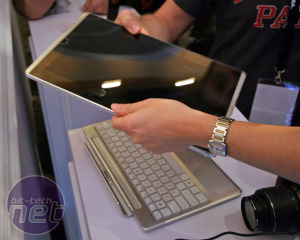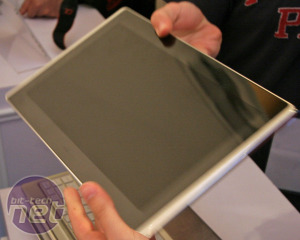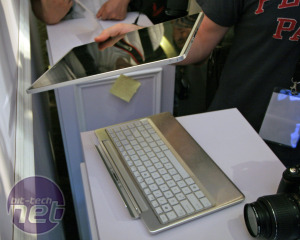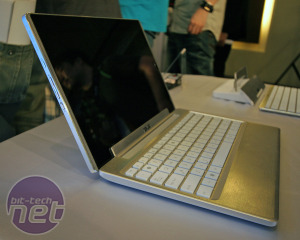Asus EeePad 101TC & EeePad EP121 Hands on
June 12, 2010 | 10:10

Hands on with Asus EeePad EP121
The Asus Eee Pad EP121 is a 'no compromise' device, according to Asus. By now you're probably used to thinking that tablets should be 9-10in in size, but Asus has pushed its beautiful aluminium-shelled touchscreen PC to 12 inches.The extra space has allowed the use of an Intel CULV processor for laptop-like performance, as well as a larger battery to compensate for the extra power draw of the respectable CPU, versus that of an Atom or ARM chip. While the ultra-thin laptops which first launched last year haven't taken off to the volume Intel and its partners had hoped, we still believe there's more legs in the CULV-tablet combo yet.
This is because CULV has more performance under the hood than any other slate-style CPU on the market, which means that it'll run the full-fat version of any OS thrown at it without the frustrating lethargy that Atom offers. This should allow multi-tasking and the use of full-scale office and productivity suites (which is important for companies that have already purchased a volume license) on a machine that's extremely light and portable.
Whereas tablets are tipped to maybe replace netbooks, the EeePad 121 is hoping to replace your laptop. To live up to this lofty ambition, Asus has designed two docking stations for the EeePad 121 - one has only a Bluetooth keyboard in the brushed aluminium housing, while the other also has an additional battery and 500GB hard disk inside. The second dock turns the EeePad 121 into a hybrid laptop and offers 'two-and-a-half times' the battery life. That's clever thinking, but it does mean you have to choose whether you want to bring the whole dock (that's probably plugged in to everything on your desk) or the tablet only on journeys out.
A 12in aluminium tablet is heavy to hold, with the extra few inches and hardware inside meaning that it's just like holding up a CULV laptop - not easy. But then again, we were reminded that the EeePad 121 is just one of Asus' three new tablet PCs, and that each is aimed at a different demographic: the EePad 121 is for use around the house - at the kitchen table, in bed or curled up on the sofa - rather than predominantly out on the road. However, while Asus was forthcoming with the exact weight of its 10in Eee Pad, it cunningly left this information out of the 12in model's specs.
The Eee Pad also comes with a full version of Windows 7 Home Premium (with Aero) too, and claims 10 hours computing, although it was difficult to ascertain because the unit we saw wouldn't even power up. Nor could we then yet tell how hot the Eee Pad EP121 might get because if it’s going to be sitting on your lap or in the palms of your hands then obviously you don’t want to be juggling a hot potato.
Despite this concern, we felt compelled to pick it up though because its biggest draw is that the Eee Pad is a beautiful example of industrial design. The simple, elegant style with gently brushed aluminium and a large black screen is in, and MSI and others will need to learn how to compete with design that's not too far off the master itself: Apple.
We're still not convinced by Windows 7 in a touch-screen environment, but it's entirely understandable on the Eee Pad, given that it's designed to be used both with and without a dedicated keyboard. Asus didn't confirm when it plans to sell the Eee Pad EP121 or what price it's planning, but we'll bring you a review as soon as it's available. From our brief time so far with it though it's the only x86-tablet we'll yet consider, once Asus finally powers it up.

MSI MPG Velox 100R Chassis Review
October 14 2021 | 15:04














Want to comment? Please log in.